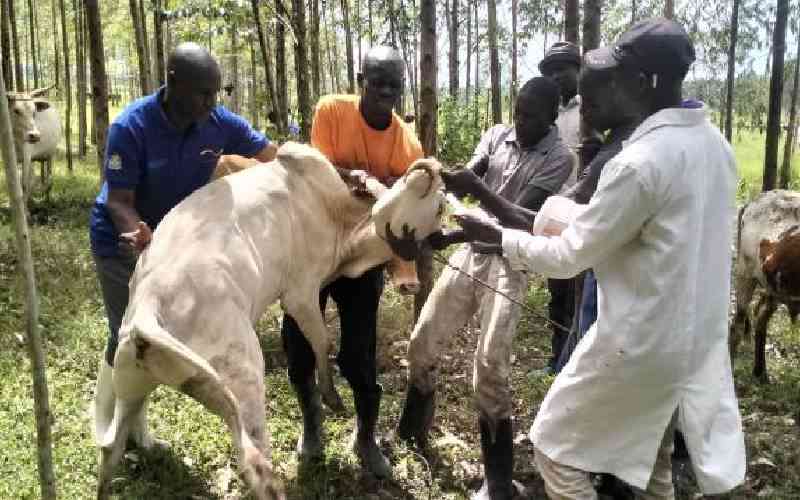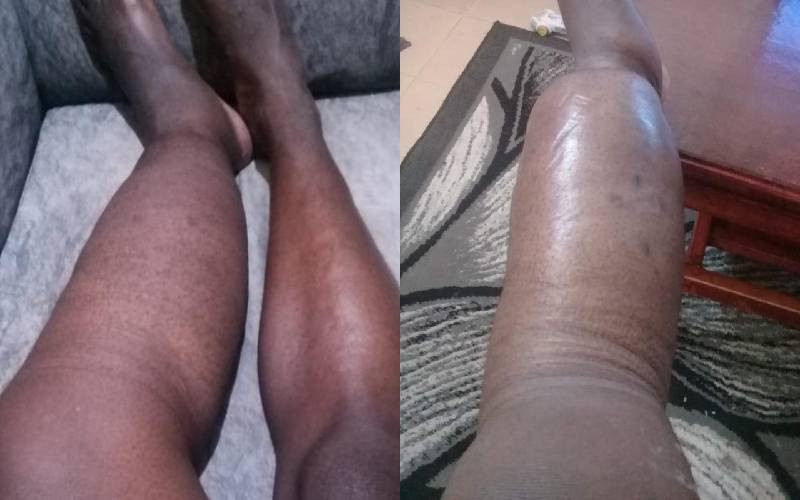
James and his neighbours from Siaya County have lost goats in the recent past to a funny disease characterised by wart-like growths around their mouths, ears, teat, scrotum and vulva.
Affected farmers initially thought the swellings around the mouth were as a result of the goats and sheep feeding on thorny bushes during the prolonged dry season.
It is common for goats to have wounds around the mouth when they feed on thorny bushes; but these are wounds that heal with time. Sadly, these swellings have become bigger and unsightly.
In our telephone conversation James told me they have tried treating the shoats with some ointment in vain.
‘Telephone diagnosis’
James desperately needed urgent help but because of work committments I was not able to visit Siaya that time.
To help with my diagnosis, he offered to send me some photos on Whatsapp of the sick goats. I agreed to this but was categorical that a vet cannot make a conclusive diagnosis using photos alone.
So he sent the photos after which he insisted I tell him what the disease was and how to manage it.
“Daktari you can suggest something we try, like we have been doing in the past,” James insisted.
But I reiterated my initial stand that pictures alone can never be used to give a diagnosis.
James needed veterinary help and I knew Dr Mark Otieno who practices around that area.
The funny thing is that he had not consulted him on the cases.
I understood very well because I know many farmers avoid visiting the vet for fear of the cost but end up making a loss threefold when the animals die.
I called Dr Otieno and informed him of this case. Luckily, the vet was within reach and he visited the farm and upon examination of the affected shoats came up with a solid diagnosis.
Stay informed. Subscribe to our newsletter
He confirmed that case at hand was Orf, Scabby mouth or contagious eczema — a viral disease that easily spreads in shoats.
The disease causes wart like growths and is self limiting (it cures by itself).
So, was James and his neighbours right in claiming that the disease had caused several deaths? Yes they were right.
Orf if not managed in good time, easily paves way for secondary infections which leads to death.
The disease should be taken seriously and reported immediately to a vet. If not treated early it can also cause lameness, can predispose animal to mastitis if it attacks the teats. Orf is common in young stock and mostly affects the mouth.
When the mouth parts of suckling stock are affected they can spread the disease during suckling. When the mother’s teats are affected it may hinder suckling and the kids may die due to starvation.
Call a vet
Uncomplicated cases will normally self cure; however don’t wait for that to take place.
Call a vet who will give appropriate antimicrobials to prevent opportunistic bacterial infections.
However the best thing to do is to vaccinate your shoats against Orf.
The Kenya Veterinary Vaccines Production Institute (KEVEVAPI) produces this vaccine under the trade name ORFVAX at Sh 1,200, the vaccine comes in 100 doses package and gives an immunity cover for one year.
It is worth noting that Orf may resemble foot and mouth disease and care should be taken not to confuse the two.
Foot and mouth is normally characterized by blisters in the mouth cavity, which leave red spots upon rupturing while Orf is characterised by external wart like growth.
To prevent Orf, care should be taken when introducing new stock; quarantine them for one week.
After infection, Orf will take one week to show clinical signs and therefore the quarantine period should be long enough to rule out the disease.
Since the disease is spread by direct contact with sick animals or contaminated objects, separation of sick shoats from healthy ones can prevent the spread of the disease.
Nonetheless vaccination is the best preventive measure against orf.
(The writer is the winner of Vet of the Year Award 2016 and works with the Kenya Tsetse and Trypanosomiasis Eradication Council –KENTTEC, [email protected])
 The Standard Group Plc is a
multi-media organization with investments in media platforms spanning newspaper
print operations, television, radio broadcasting, digital and online services. The
Standard Group is recognized as a leading multi-media house in Kenya with a key
influence in matters of national and international interest.
The Standard Group Plc is a
multi-media organization with investments in media platforms spanning newspaper
print operations, television, radio broadcasting, digital and online services. The
Standard Group is recognized as a leading multi-media house in Kenya with a key
influence in matters of national and international interest.
 The Standard Group Plc is a
multi-media organization with investments in media platforms spanning newspaper
print operations, television, radio broadcasting, digital and online services. The
Standard Group is recognized as a leading multi-media house in Kenya with a key
influence in matters of national and international interest.
The Standard Group Plc is a
multi-media organization with investments in media platforms spanning newspaper
print operations, television, radio broadcasting, digital and online services. The
Standard Group is recognized as a leading multi-media house in Kenya with a key
influence in matters of national and international interest.








